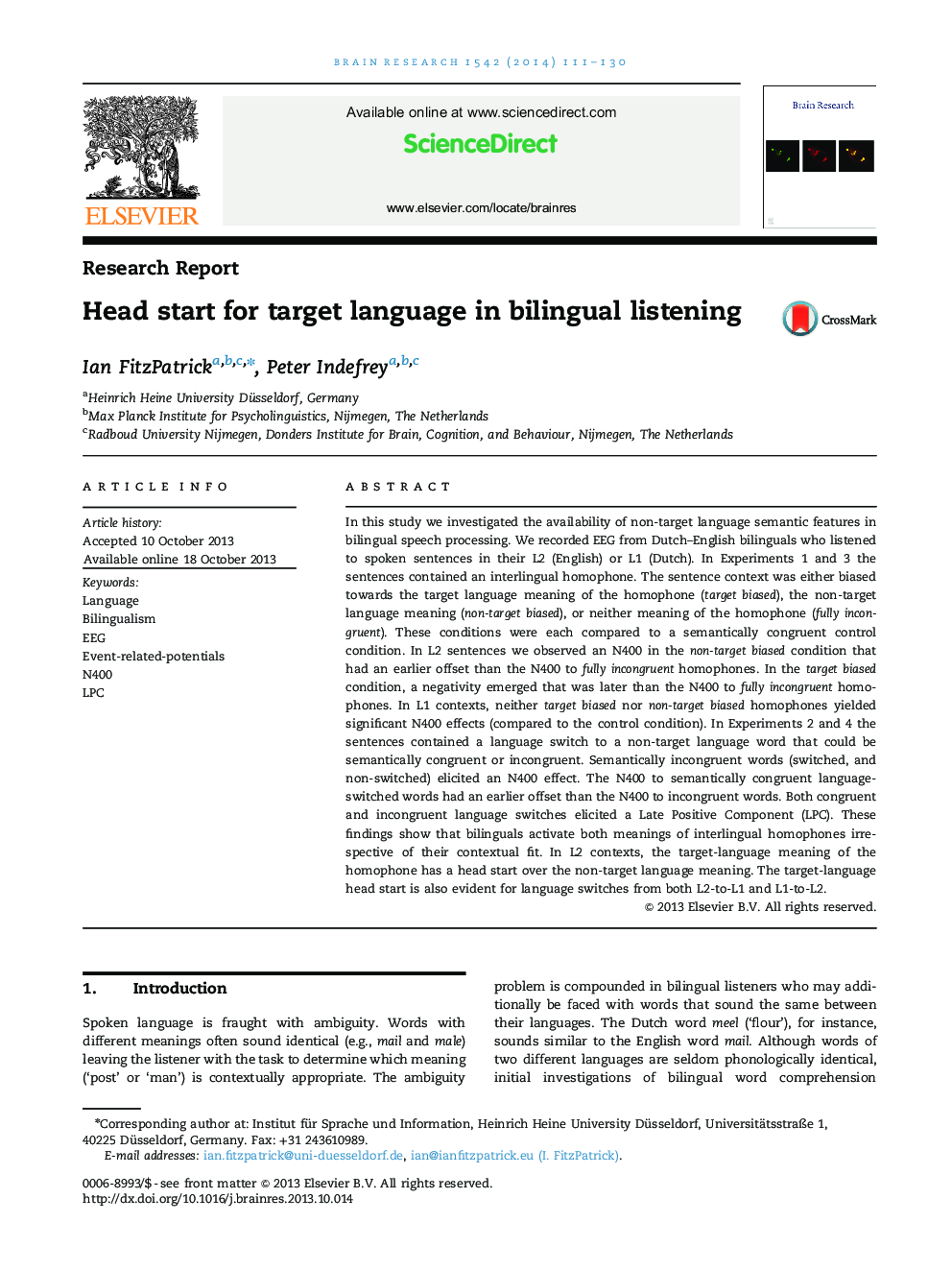| کد مقاله | کد نشریه | سال انتشار | مقاله انگلیسی | نسخه تمام متن |
|---|---|---|---|---|
| 6263492 | 1613897 | 2014 | 20 صفحه PDF | دانلود رایگان |
- Bilinguals activate cross-linguistic homophone meanings irrespective of their contextual fit.
- Bilinguals can prioritise the availability of the target language above the non-target language.
- Interlingual homophones exhibit qualitatively different ERP waveforms from language switches.
- Second language lexical items can be activated in native-language contexts.
In this study we investigated the availability of non-target language semantic features in bilingual speech processing. We recorded EEG from Dutch-English bilinguals who listened to spoken sentences in their L2 (English) or L1 (Dutch). In Experiments 1 and 3 the sentences contained an interlingual homophone. The sentence context was either biased towards the target language meaning of the homophone (target biased), the non-target language meaning (non-target biased), or neither meaning of the homophone (fully incongruent). These conditions were each compared to a semantically congruent control condition. In L2 sentences we observed an N400 in the non-target biased condition that had an earlier offset than the N400 to fully incongruent homophones. In the target biased condition, a negativity emerged that was later than the N400 to fully incongruent homophones. In L1 contexts, neither target biased nor non-target biased homophones yielded significant N400 effects (compared to the control condition). In Experiments 2 and 4 the sentences contained a language switch to a non-target language word that could be semantically congruent or incongruent. Semantically incongruent words (switched, and non-switched) elicited an N400 effect. The N400 to semantically congruent language-switched words had an earlier offset than the N400 to incongruent words. Both congruent and incongruent language switches elicited a Late Positive Component (LPC). These findings show that bilinguals activate both meanings of interlingual homophones irrespective of their contextual fit. In L2 contexts, the target-language meaning of the homophone has a head start over the non-target language meaning. The target-language head start is also evident for language switches from both L2-to-L1 and L1-to-L2.
Journal: Brain Research - Volume 1542, 13 January 2014, Pages 111-130
